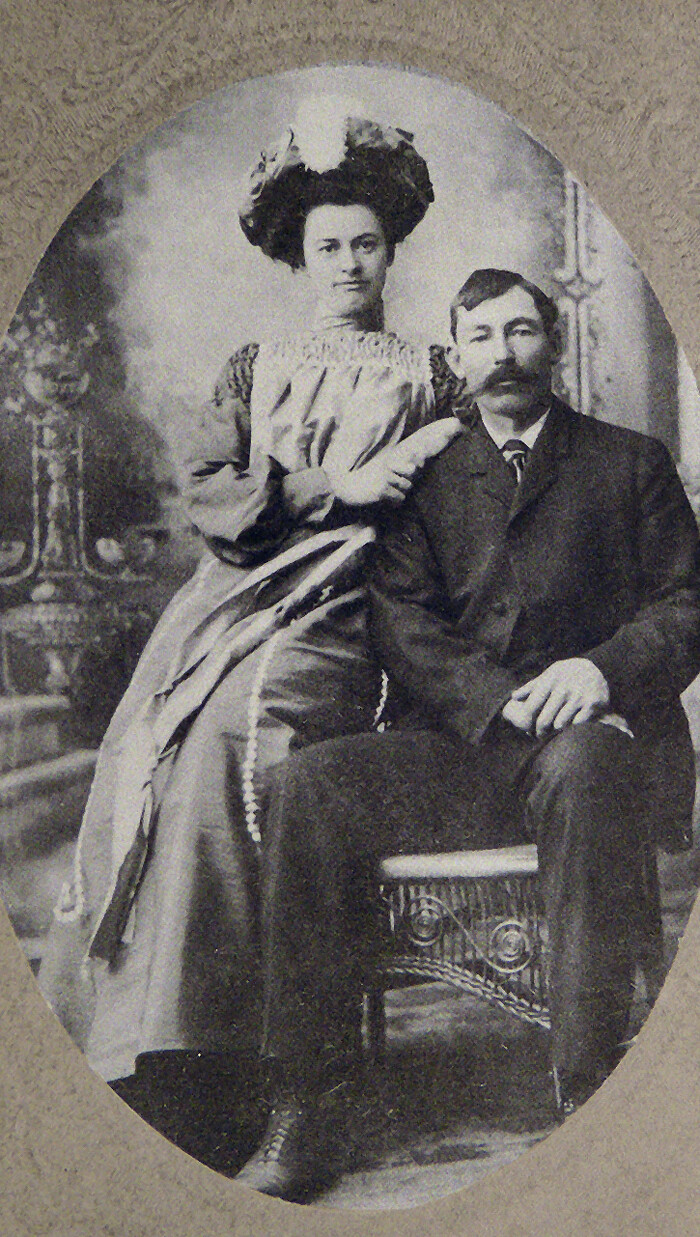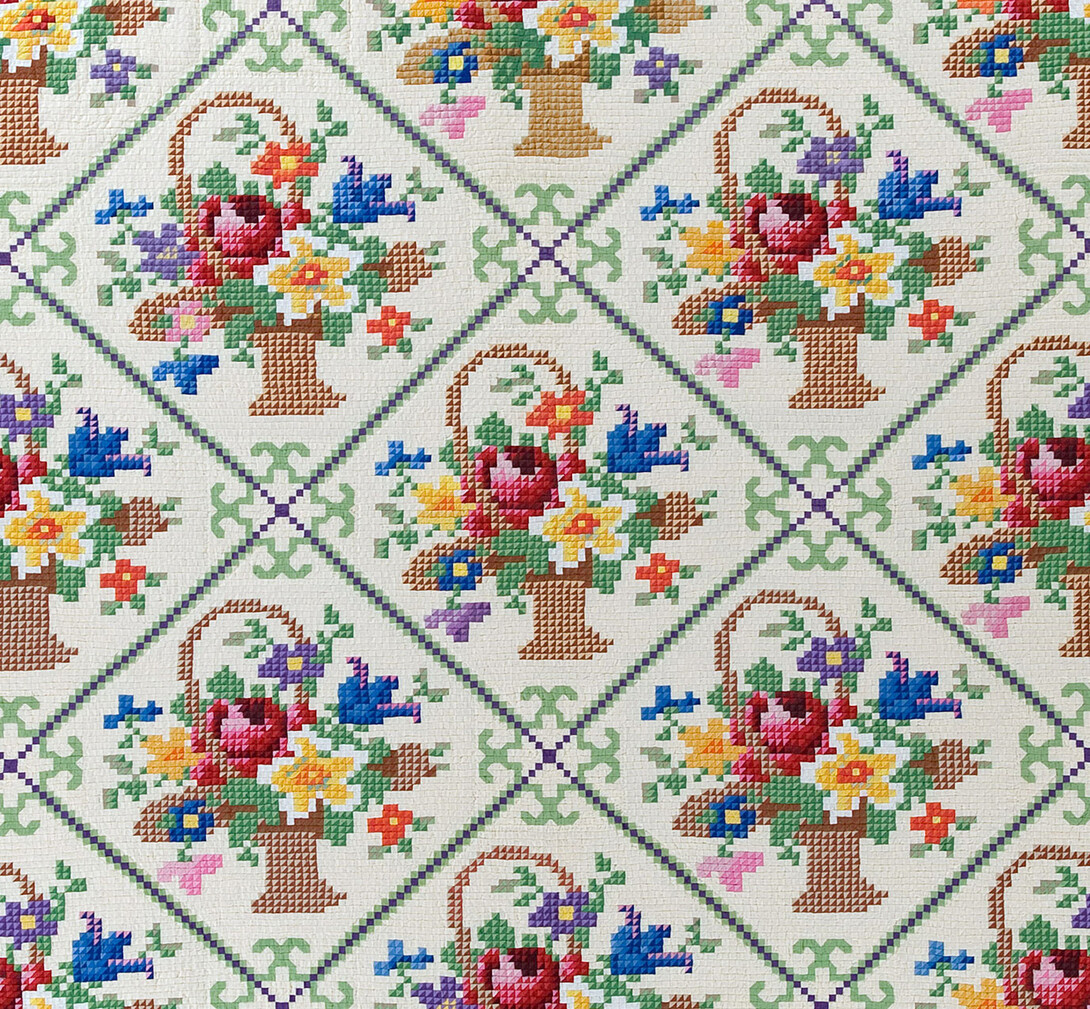
Grace Snyder’s lively eyes gaze out of her 1903 wedding photograph. There’s an astonishing hat atop her head and a tiny, cat-got-the-cream smile on her lips. She perches just behind her cowboy husband, her clasped hands resting near his left shoulder.
Her story, in many respects, mirrors Nebraska’s history in the late 19th century and much of the 20th century.
Born in 1882, reared in a sod house on a Custer County homestead and married to a Sandhills cowboy and rancher, she recounted her pioneer life in the 1963 book “No Time on My Hands,” as told to her daughter, author Nellie Snyder Yost.
Along the way, she became nationally known for her quilting expertise. Two of her quilts were designated as among the 100 best 20th-century quilts by Quilters Newsletter Magazine in 1999. She was named to the National Quilters Hall of Fame in 1980, two years before her death at 100.
Now Grace Snyder is the focal point of an innovative new history curriculum developed jointly by NET Learning Services, the International Quilt Study Center and Museum and the Nebraska State Historical Society.
Called “Tiny Stitches, Big Life,” the online multimedia project uses Snyder’s quilts and her life experiences to bring pioneer history to life for Nebraska elementary school students. It is the first module of a larger project, “Stories of Nebraska Quilters,” with plans to develop additional material about other Nebraskans who are remembered through their quilts.
The project supplements Nebraska’s fourth-grade curriculum, which requires students to learn about state history.
It is a way to connect family history with local and state history, said Patricia Crews, the recently retired director of the quilt museum at UNL. She helped develop the website’s content.
“Grace Snyder was a child of homesteaders,” Crews said. “She made her home in the Sandhills, she was a ranch wife. Grace’s life story provides a wonderful lens on state history.”
The http://nequilters.org website details the chapters of Snyder’s life, using her quilts to illustrate its major themes. The site includes a magnifying feature to allow a close examination of the many quilt images and photographs included on the site, as well as an interactive timeline that links Snyder’s life and times with historic events.
Sarah Winans, a Lincoln fourth-grade teacher and Nebraska’s 2013 History Teacher of the Year, wrote accompanying lesson plans for teachers, adapting and expanding upon previous work by Di Kitterer Ryter. The plans meet the latest state educational standards requiring students to learn to analyze primary and secondary information sources while they study history.
She said quilts resonate with her students, many of whom have special quilts in their own families. Quilts can serve as the starting point to gather oral histories from family members. Their design, fabric and stitches also can offer clues about the past. Sometimes the quilter included a label to explain when and why the quilt was made.
“Quilts are such a powerful primary source that kids can touch and analyze,” Winans said. “It was a great way to implement those new standards.”
The site has been live since September, said Chet Kincaid, a senior producer for Interactive Educational Media at NET Learning Services.
“We use sound and images to tell Grace’s story, relating it to historic events and her quilts,” Kincaid said. “Nebraska history inspired her quilts.”
Next up in “Stories from Nebraska Quilters” likely will be Ernest B. Haight (1899-1992), a David City farmer who drew upon his 1923 engineering degree from the University of Nebraska to design and construct dramatic quilts, beginning in the Great Depression years. He published a booklet in 1974 describing the new method he developed for quilting by machine.
More potential subjects could come from the quilters profiled in “Nebraska Quilts and Quiltmakers,” a 1991 book co-edited by Crews that describes more than 100 historic quilts documented in the Nebraska Quilt Project in the late 1980s.
Though Winans grew up in North Platte, not far from where Snyder lived, she said she didn’t learn about the famed quilter when she was in elementary school. Later, she studied Snyder for a project while pursuing her master’s degree.
Many fourth-grade teachers now incorporate Snyder into history classes. Winans uses “Pioneer Girl” by Andrea Warren, a children’s version of Snyder’s story.
“This is too great a story for kids not to learn about,” Winans said. “She’s such a plucky character. Even boys love the story about a girl homesteader. She really lived through 100 years of Nebraska history.”









